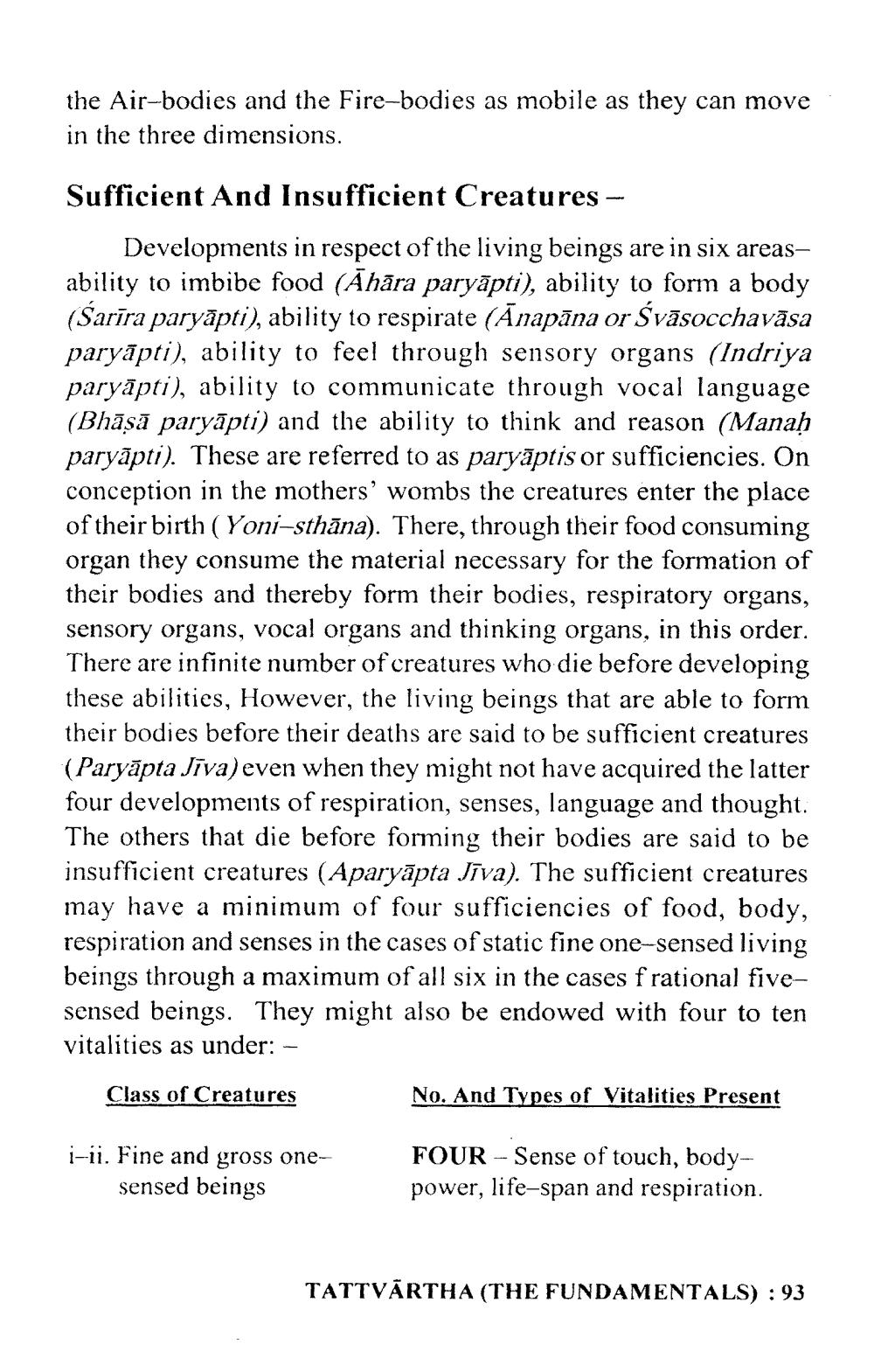________________
the Air-bodies and the Fire-bodies as mobile as they can move in the three dimensions.
Sufficient And Insufficient Creatures -
Developments in respect of the living beings are in six areasability to imbibe food (Ahāra paryāpti), ability to form a body (Sarīra paryāpti), ability to respirate (Anapāna or Švāsocchavāsa paryāpti), ability to feel through sensory organs (Indriya paryāpti), ability to communicate through vocal language (Bhāṣā paryāpti) and the ability to think and reason (Manaḥ paryāpti). These are referred to as paryāptis or sufficiencies. On conception in the mothers' wombs the creatures enter the place of their birth (Yoni-sthāna). There, through their food consuming organ they consume the material necessary for the formation of their bodies and thereby form their bodies, respiratory organs, sensory organs, vocal organs and thinking organs, in this order. There are infinite number of creatures who die before developing these abilities, However, the living beings that are able to form their bodies before their deaths are said to be sufficient creatures (Paryāpta Jīva) even when they might not have acquired the latter four developments of respiration, senses, language and thought. The others that die before forming their bodies are said to be insufficient creatures (Aparyāpta Jīva). The sufficient creatures may have a minimum of four sufficiencies of food, body, respiration and senses in the cases of static fine one-sensed living beings through a maximum of all six in the cases f rational fivesensed beings. They might also be endowed with four to ten vitalities as under: - Class of Creatures
No. And Types of Vitalities Present
i-11. Fine and gross one
sensed beings
FOUR - Sense of touch, bodypower, life-span and respiration.
TATTVĀRTHA (THE FUNDAMENTALS) : 93




